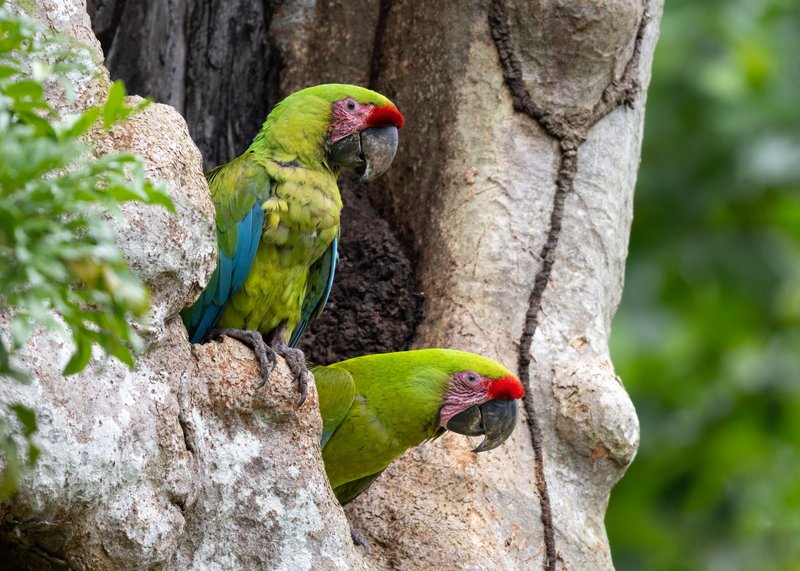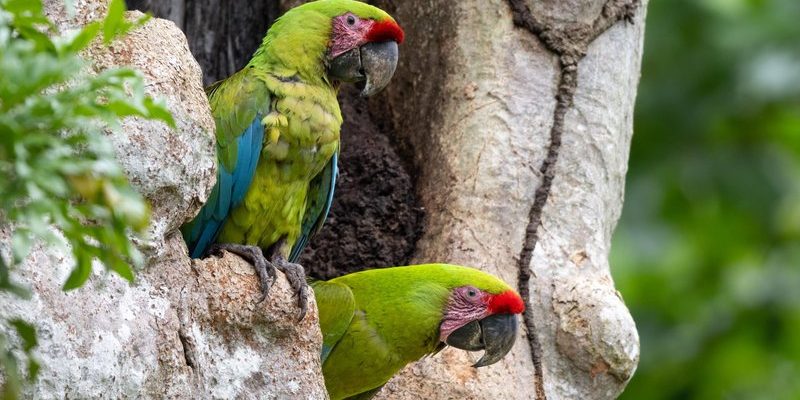
You might imagine conservation as a giant safety net, designed to catch and protect endangered species like the Amazon parrot. It involves a range of strategies that include habitat preservation, legal protection, and community engagement. Just like a well-coordinated team effort, each of these elements works together to ensure that the Amazon parrot can thrive in its natural habitat.
The Importance of the Amazon Parrot
Understanding why we need to protect the Amazon parrot is critical. These birds play a vital role in their ecosystem. Like little gardeners of the forest, they help with seed dispersal. As they munch on fruits and nuts, they inadvertently scatter seeds through their droppings, which can lead to the growth of new plants. This natural process helps maintain the biodiversity of the Amazon rainforest.
Moreover, Amazon parrots are social creatures. They’re known for their intelligence and ability to mimic sounds, which can create connections between people and nature. In many regions, they are seen as symbols of wildlife and nature conservation. Losing them would mean losing a unique part of our natural world and its rich tapestry of life.
Threats to the Amazon Parrot
Several factors threaten the Amazon parrot’s survival. Deforestation is perhaps the most significant. As forests are cleared for agriculture, logging, or urban development, these birds lose their homes. Without trees, they struggle to find food and safe nesting sites, pushing them toward extinction.
Another major threat is illegal trapping and trade. Many of these parrots are captured for the pet trade, often resulting in significant population decreases in the wild. Imagine being taken from your family and home; that’s what these beautiful birds face. Their vibrant feathers and sociable nature make them desirable pets, but the reality is harsh for the wild populations.
Conservation Strategies
To combat these challenges, various conservation strategies have been developed. One major approach involves habitat protection. Organizations work to establish reserves and national parks where wildlife can thrive without human interference. By safeguarding these areas, they not only protect the Amazon parrot but also countless other species that share their habitat.
Another strategy is community involvement. Local people often have a crucial role in conservation efforts. Programs that engage communities in protecting their local environment can help foster a sense of responsibility towards wildlife. For example, eco-tourism initiatives can provide financial incentives for locals to protect rather than exploit natural resources. When communities thrive, so do the birds.
Legislation for Protection
Legislation plays a significant role in conservation, and protecting the Amazon parrot is no exception. Laws such as the Convention on International Trade in Endangered Species of Wild Fauna and Flora (CITES) help regulate the trade of these birds. By making it illegal to capture and sell wild Amazon parrots, these laws aim to reduce the pressure on their populations.
Additionally, national laws in countries like Brazil further protect these birds. Programs that promote sustainable land use and forest management are essential to ensure that natural habitats remain intact. Here’s the thing: effective legislation requires cooperation from various stakeholders, including governments, conservation organizations, and local communities.
Successful Conservation Projects
Across the Amazon, many projects are making a positive impact on the conservation of the parrot. One example is the Amazon Conservation Team (ACT). They work closely with indigenous communities to protect their land and the wildlife that inhabits it. By respecting traditional knowledge and practices, ACT helps create sustainable ways of living that benefit both the community and the environment.
Another noteworthy initiative is the BirdLife International program, which focuses on habitat preservation and community education. By raising awareness about the importance of the Amazon parrot and the threats they face, these projects encourage people to take action for their protection. They often provide resources and training to empower local groups in conservation efforts.
The Role of Education and Awareness
Education is a powerful tool in conservation. By raising awareness about the Amazon parrot’s plight, more people become involved in their protection. This can involve school programs, local workshops, or social media campaigns. As more individuals learn about the importance of these birds, they are likely to advocate for their conservation.
You might be wondering how you can get involved. Supporting wildlife organizations, participating in local cleanups, or even spreading the word about the silent struggles of these parrots are all great ways to contribute. Every little action adds up, and it can create a ripple effect in conservation efforts.
How You Can Help
You don’t have to be a scientist or a conservationist to make a difference. Simple actions can have a big impact on the survival of the Amazon parrot. Here are a few ways you can help:
- Support conservation organizations – Consider donating to organizations that work to protect the Amazon rainforest and its wildlife.
- Spread awareness – Share information about the Amazon parrot and its conservation needs on social media.
- Choose sustainable products – Opt for sustainably sourced goods and avoid products linked to deforestation.
- Participate in local conservation efforts – Join community clean-up days or advocate for local policies that protect wildlife.
Each of these small steps contributes to a larger goal: the protection of not just the Amazon parrot, but the diverse ecosystem they represent.
In conclusion, protecting the Amazon parrot requires a multifaceted approach involving habitat conservation, laws, community engagement, and education. The efforts are ongoing, but with increased awareness and actions, we can help ensure these vibrant birds continue to thrive in their natural habitat. So, the next time you hear the cheerful squawk of an Amazon parrot, think about the amazing work being done to protect it – and how you can be a part of that future.

